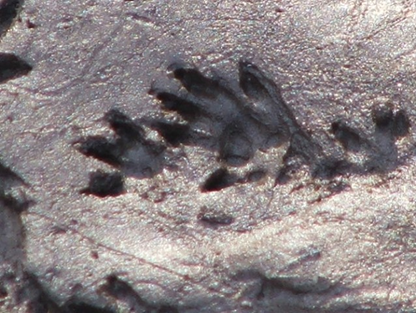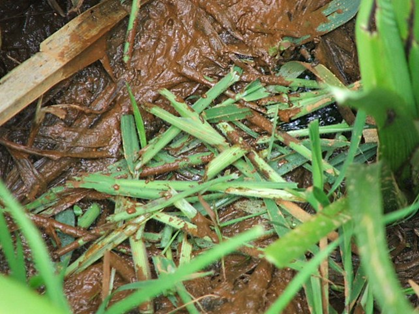#28 Water Vole by Jon Traill
Meet Jon Traill, Living Landscapes Manager at Yorkshire Wildlife Trust!
Jon started his conservation ‘career’, like many, as a volunteer involved with practical conservation tasks at his (then) local nature reserve of Eastrington Ponds. This led to a paid post as a team leader overseeing a ‘gang of volunteer workers’ at the reserve, which was literally on his doorstep. Twenty-five years later, he is still working in conservation having spent 21 of them with Yorkshire Wildlife Trust. His first role was as a dedicated ‘Water Vole Officer’, and it was then that he first came across this enigmatic little mammal. From this first foray into a truly wetland mammals world, Jon has continued to be involved in the conservation of wetlands of all shapes and sizes, but he has spent most of his time lucky enough to work on the iconic chalk streams of the upper River Hull catchment and smaller chalk streams on the scarp slopes of the Yorkshire Wolds. Now Jon is Yorkshire Wildlife Trust’s Living Landscape Manager for the Wolds and Holderness areas of East Yorkshire. Whilst this sometimes takes him away from wetlands, water vole conservation is still an underlying thread in his life and career.
Water Vole on a vegetation mat. (c) Jon Traill
Unsurprisingly, Jon’s chosen species is the Water Vole Arvicola amphibius. This small mammal is found along our waterways and can be identified by its chestnut-brown fur, blunt nose, small ears, and a furry tail. Our largest vole species, they can sometimes be mistaken for the Brown Rat Rattus norvegicus, but rats are larger, with more grey-brown fur, a pointed nose, and a bare tail. Living along generally slow-moving rivers and streams, as well as ponds, ditches, and other wetland areas, Water Vole presence can often be determined by piles of nibbled grass and stems left alongside burrows in the riverbank. The way in which they eat is distinctive – look out for stems cut at a 45-degree angle! This species is under serious threat in the form of habitat loss and predation by non-native species -it is widespread but declining in the UK. For more information, visit the NBN Atlas page for the Water Vole.
Having started his career as a dedicated ‘Water Vole Officer’, it’s no surprise that Jon has a particular connection to this enigmatic species. He recalls his first true encounter as a child growing up in Elvington, near York:
‘At the time I was not really aware of the difference between ‘Ratty’ famed in Kenneth Graeme’s Wind in the Willows and the Brown Rat. Water voles were relatively common however as I scrambled through hedge bottoms and fell into ditches, often disturbing this benign fluffy mammal. I would watch them speed off swimming frantically, looking like a clockwork toy navigating through the reeds.’
Sadly, by the time Jon has started volunteering, much of the damage for Water Voles, in the form of habitat loss and introduced predators, had already been done. Thousands of wetlands were drained, post world war two, to provide food security at a time of food shortages. This habitat loss and fragmentation was compounded in the 1960 and 1980’s by the spread of a non-native highly efficient predator as the American Mink Neovison vison escaped from, or was let out of fur farms across the country. This ferret sized mustelid was a good swimmer, a systematic hunter and crucially female mink were small enough to enter water vole burrows to hunt them down.



As Jon visited Eastrington Ponds near Howden and spent many hours watching the resident voles. The National Water Vole Surveys, completed in 1989 and 1998 by the Vincent Wildlife Trust, had shone a light on the fastest known decline of any UK mammal, with over 90% losses in some areas – with the Yorkshire region recognised as one of the worst hit areas. These resident water voles at Eastrington were somewhat special, although they didn’t know it, both in terms of local ecology and also in terms of Jon’s journey into paid conservation work. Sadly, today Water Voles are rarely seen at the ponds, an all too familiar tale of a relatively small isolated wetland where chance factors such as predation pressure combined with weather events such as floods or drought, or a simple numbers game of insufficient numbers of breeding adults, means that the site is another negative on the survey statistics. Whilst conservationists such as Jon are lucky enough to encounter Water Voles and their tell-tale signs on a regular basis, this is not true for many people across large areas of our waterways and wetlands.
However, all is not doom and gloom. If we move east across to the River Hull catchment, an isolated, disconnected (in terms of its linkages with the other main rivers of Yorkshire) river system and head upstream from the city of Hull, past the market town of Beverley to the ‘capital of the Wolds’ town of Driffield, you will find the amazing and nationally important chalk streams of the upper River Hull headwaters. These streams are nationally significant, part of a network of one of the rarest habitats in the world, with only around 250 chalk streams worldwide and over 90% found in the UK.
For Jon, these special habitats are places he’s had the pleasure of spending much of his career: ‘These streams have been somewhere I have spent thousands of hours, studying water voles, carrying out hundreds of surveys and countless more hundreds of hours restoring wetland habitats, creating new areas of wetlands and ponds, working with many landowners, other conservation professionals and an army of dedicated and amazing volunteers.’
“‘I unlike many, not only await the return of the first Swallow of spring, but also always have half an eye on my first Water Vole of spring, a sign that they have survived another year, ready to breed and whizz and whirr like wind-up toys as they busily swim back and forth in their watery world.’ ”
Chalk streams offer great opportunity for water voles. With their luxuriant beds of vegetation that provide a food larder year-round for the vegetarian vole, and relatively slow flowing and slowly rising water levels , these habitats are ideal for voles. If conditions are right and inter-connected, well managed extensive areas of wetland, drainage channels and chalk streams are looked after, numbers can and do recover. Reintroduction schemes have also bolstered numbers in Yorkshire, with including at Malham Tarn in the Yorkshire Dales and in the Nidderdale Area of Outstanding Beauty, with some individuals tracked up to 1km from their release site.
Monitoring
Water Vole burrows (c) Jon Traill
The People’s Trust for Endangered Species runs the National Water Vole Monitoring Programme, which has been running annually since 2015. The programme involves volunteers surveying 500m stretches of waterways annually between the 15th April and 15th June each year, recording all signs of Water Vole activity. This allows for comparison between years to see how Water Voles are doing. One off sightings can be reported to us at NEYEDC, and these are fed into the National Water Vole Database and Mapping Project, run by the Wildlife Trusts.
Further information and acknowledgements
NEYEDC would like to thank Jon for his time and expertise in helping to create this blog. If you would be interested in creating a piece for the project, please contact lucy.baldwin@neyedc.co.uk.


